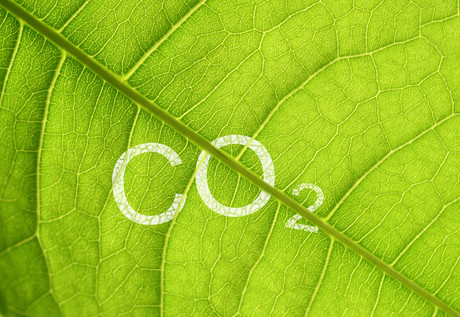Plants show unexpected response to elevated CO2

A research team led by the University of Minnesota has found that plants are responding in unexpected ways to increased carbon dioxide in the air, reversing previously well-established patterns.
Scientists categorise plants based on the way in which they process carbon, the two most common classes being C3 (eg, rice, wheat, trees) and C4 (eg, corn, sugarcane, most other grasses). Theory and experimental evidence have suggested that C3 grasses are more sensitive to carbon dioxide levels than C4 species and thus will grow and gain more biomass in response to rising carbon dioxide levels — a pattern that is critical to understand to accurately model future climate. But past experiments have only looked at C3 and C4 responses over relatively short periods.
Now, years of patience have paid off for Professor Peter Reich and colleagues, who have been monitoring 88 plots that were originally planted in Minnesota two decades ago as part of the BioCON project. The plots were filled with warm-season C4 grasses and cool-season C3 grasses and exposed to both current carbon dioxide levels and the elevated levels the Earth might experience later this century due to human activity. The results were recorded in the journal Science.
“Because carbon dioxide is needed by plants to grow, we expected grasses that have the C3 photosynthetic pathway to grow more under elevated CO2, because these plants are known to be able to increase their CO2 capture as CO2 levels rise,” said Professor Reich. “We also expected that growth of grasses with the C4 photosynthetic pathway would not be affected by higher CO2 levels, because these plants are generally less able to capture extra CO2 as CO2 levels rise. While that held true for the first dozen years, that pattern changed.”
During the first 12 years of the study, C3 plots averaged a 20% increase in total biomass in response to elevated carbon dioxide levels, compared to ambient conditions, while C4 plots averaged a 1% increase — changes that were in line with expectations. However, during the subsequent eight years, the pattern reversed: C3 plots averaged 2% less than their ambient counterparts and C4 plots averaged 24% more biomass.
The researchers are still uncertain as to why this shift happened, finding that variables such as rainfall and net photosynthesis of the plants had little correlation with the reversal — while, mysteriously, the mineralisation of nitrogen did. But whatever the cause, the findings could have significant implications.
“If mature grasslands worldwide behave like our experiment did, this could have long-lasting impacts on how we think about the conservation and restoration of grasslands around the world,” said Reich. “Grasslands cover between 30 and 40% of land and play a key role in soaking up carbon dioxide released by burning fossil fuels.”
Along with impacts on conservation and restoration planning, these data could be used to help computer models better predict how plants will respond to changing CO2 concentrations in the atmosphere. Reich noted, “Our results suggest that the predictions made by these models might not be quite right and that we should not be overly confident about our assumptions regarding where, and by how much, land ecosystems will keep absorbing extra CO2 out of the air.”
How light helps plants survive in harsh environments
Researchers from National Taiwan University have uncovered how light stabilises a key...
SKA-Low's first image of the universe released
The image is an indication of the scientific revelations that will be possible with the...
Which blood test is best at monitoring ALS?
A new study compares three types of blood biomarkers: neurofilament light chain proteins, glial...




